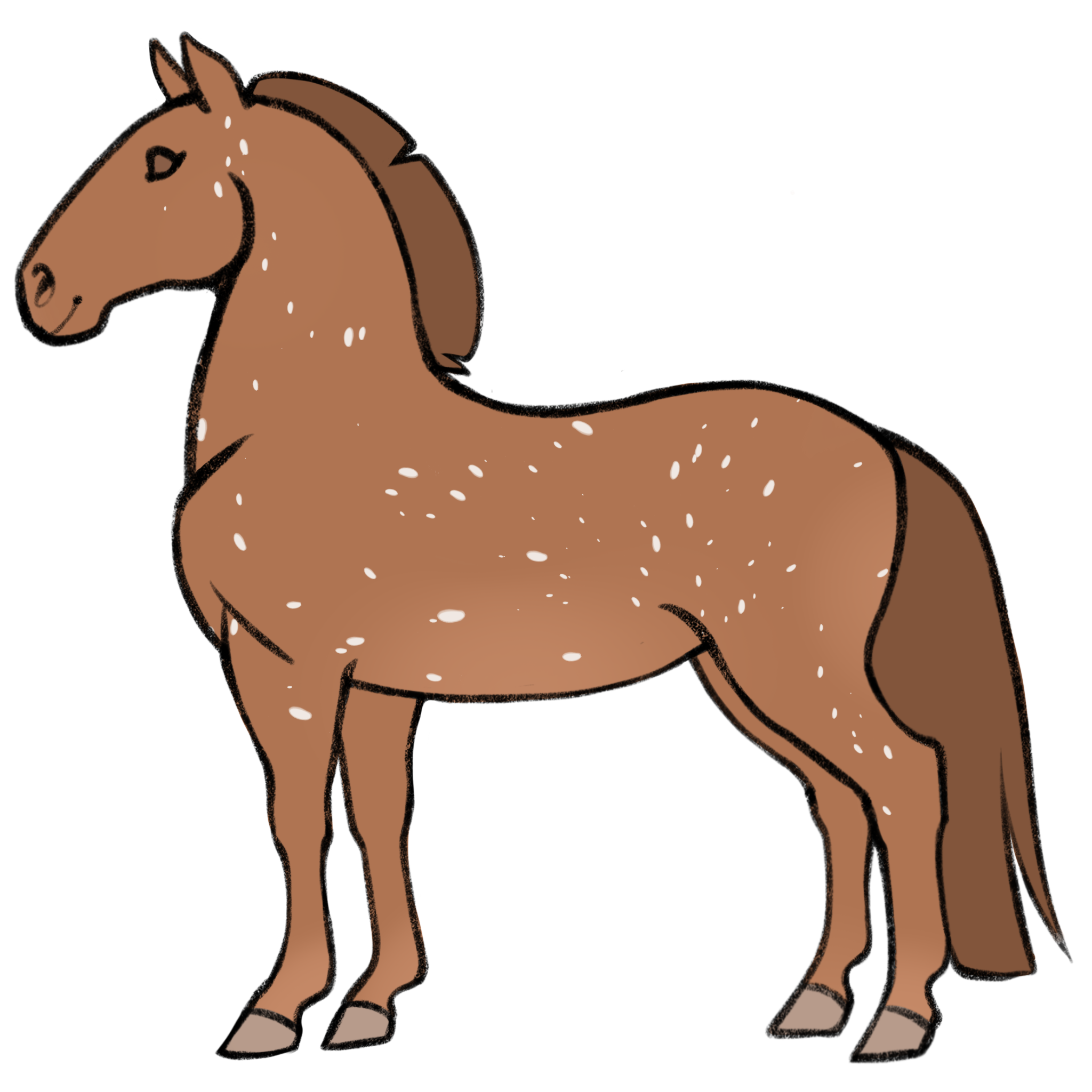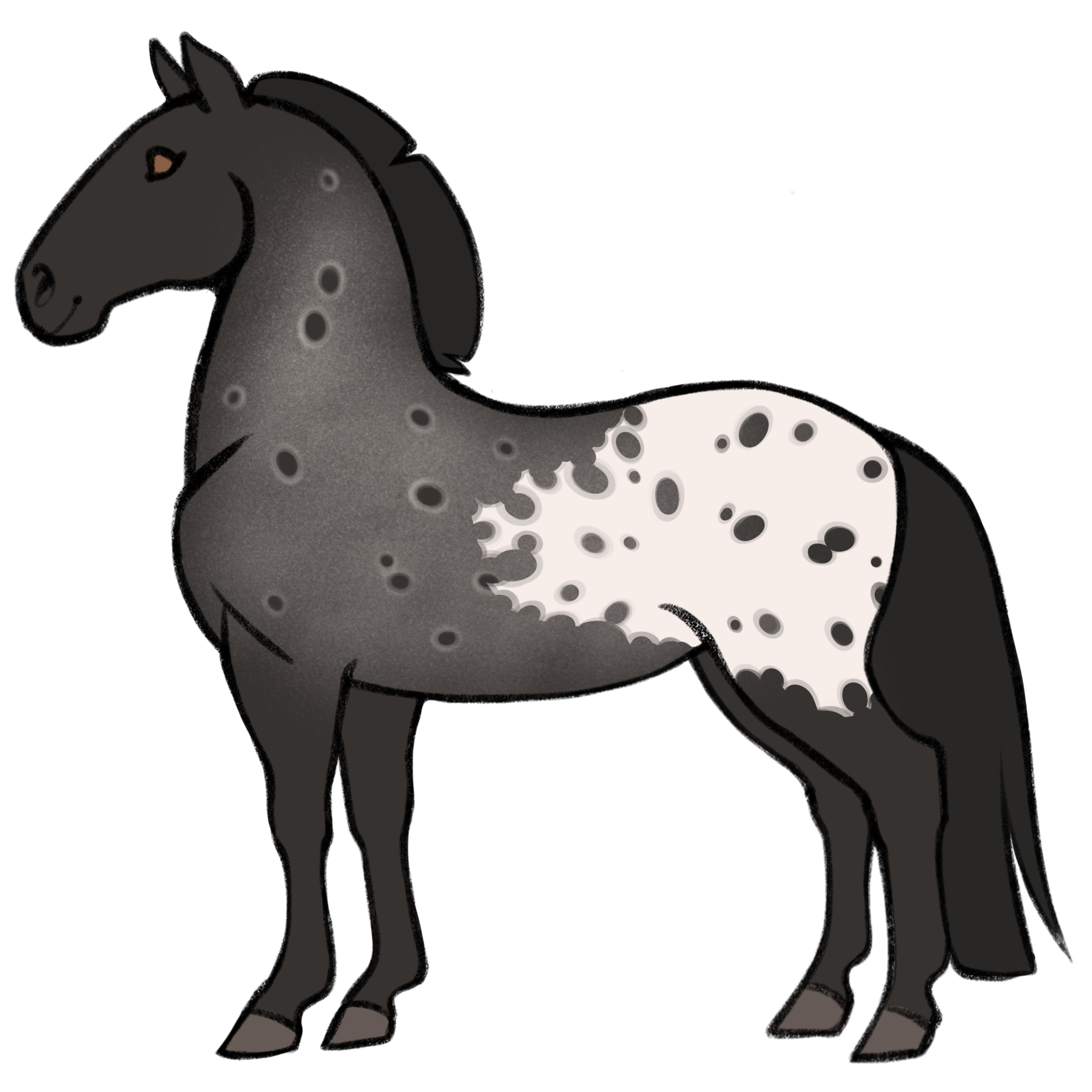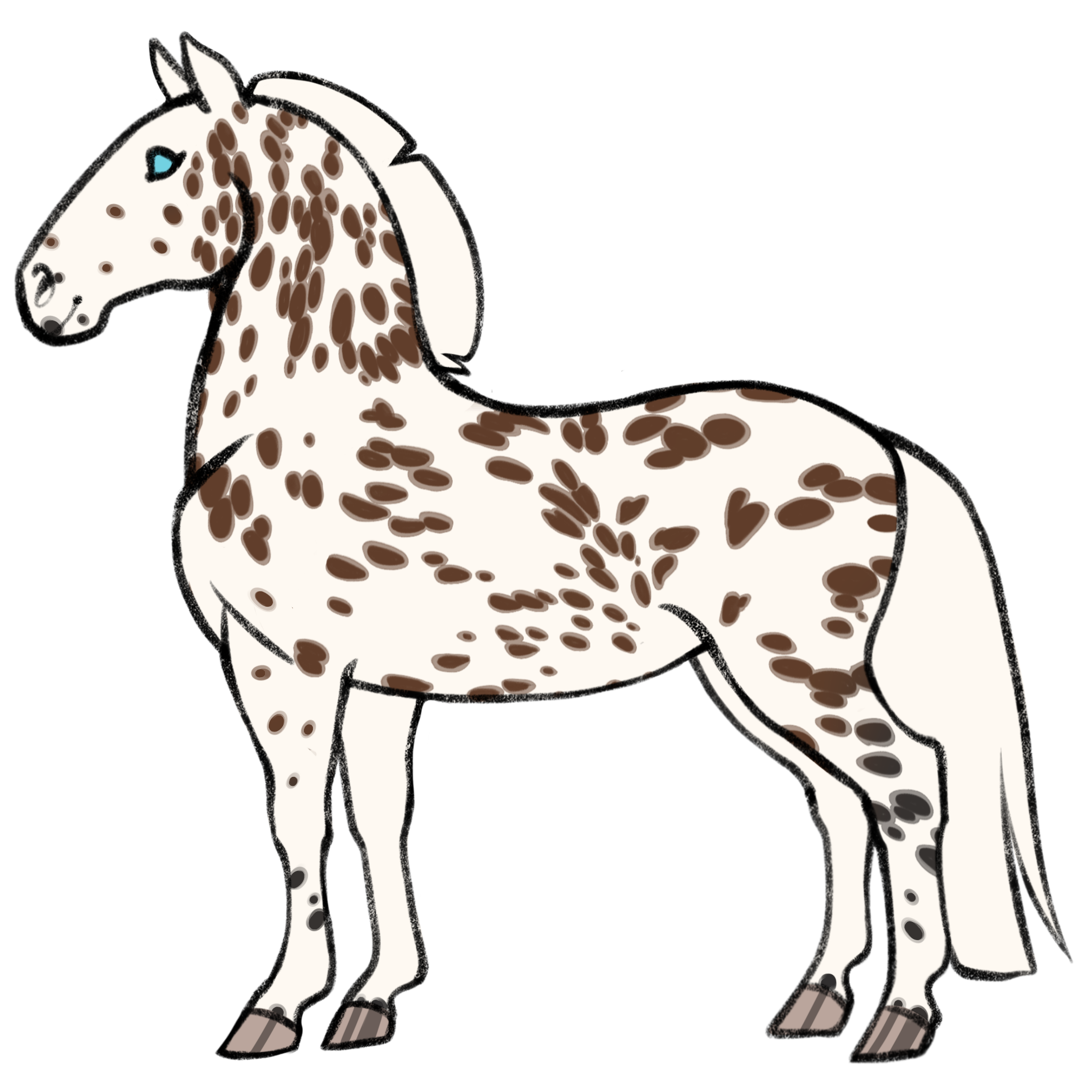Traits
(nLP) het. leopard complex (Natural)
Name: Heterozygous Leopard Complex
Base Genotype: nLP (no PATN, single PATN, or two PATNPATN)
Skin Color: Solid or mottled where leopard spotting touches skin.
Eyes: Brown or Blue
Description: One copy of LP by itself is the switch that flips on any "patn" genes present, and allows them to be expressed.
- If there are no patn genes present, then the horse exhibits "Snowflake" - a type of white spotting that covers the horse's body, similar to birdcatcher spots, but can vary in size and number and tend to be larger and more numerous than birdcatcher spots.
- If one patn gene is present, the horse exhibits a "Semi-Blanket" pattern, with crispy edges, that starts at the rump and can cover from the rump to the shoulders at maximum. Varnish-style roaning can also be present on the body, face, and legs of the horse. This roaning can also feature spots. These spots can be ringed with a lighter rings of roan to create a leopard complex variation known as "Peacock Appaloosa" on a horse.
- If two copies of the patn gene is present, the horse is "Full Blanket" and the entire body is white, with medium to large spots that reveal the base coat beneath the white.
The Leopard Complex also causes mottled skin and striped hooves where spots touch the coronet band. If white touches the eye, the eyes can be blue or exhibit heterochromia. Leopard patterns can also exist alongside other white patterning, such as tobiano or overo, to create "pintaloosa" patterns.
Examples of a chestnut snowflake, a black base with a semi-blanket pattern (this horse also has light "peacocking" on the roan spots), and a bay horse with a full blanket pattern.


